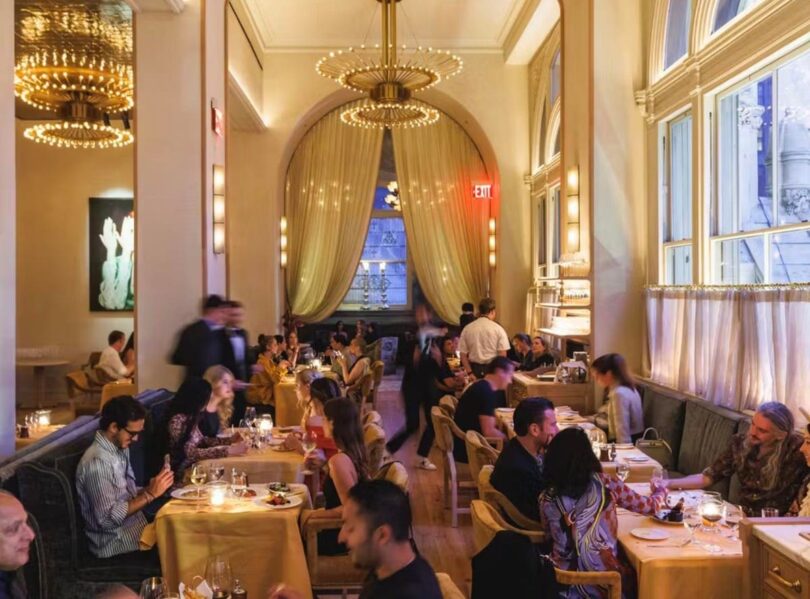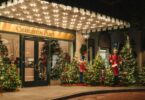Veronika at Fotografiska
For much of the 20th century, the granite and Indiana limestone Church Missions House on Park Avenue South in New York was the headquarters of the Episcopal Church’s Domestic and Foreign Missionary Society.
Since 2019, the building has been home to the New York branch of Fotografiska, the Swedish photography museum.
Whatever the religious history of the building, Fotografiska is the sexiest museum in the city, no question about it. Its motto: “Have fun, stay late, dig deep and spill your drink.” They really mean it, too: the museum closes 9pm most nights and 11pm Friday and Saturday night.
Past exhibitions have included “Andy Warhol: Photo Factory,” “Miles Aldridge: Virgin Mary. Supermarkets. Popcorn. Photographs 1999 – 2020” and “David LaChapelle: make BELIEVE.” Currently, visitors can check out stunning portraits of Audrey Hepburn, Frank Sinatra, Kate Moss, David Bowie, The Beatles, Brigitte Bardot and three James Bonds in “Terry O’Neill: Stars.” With drinks in hand.
Beyond the exhibitions, Fotografiska is also home to Verōnika, a sexily refined world-class dining destination named for the patron saint of photography. “We are aiming for guests to have an integrated experience,” says Fotografiska chairman Yoram Roth. “Under one roof, it’s a one-stop shop to experience a world-class meal at Verōnika, an inspiring visit to the museum, and perhaps a nightcap at Chapel Bar.”
The walls of Verōnika are adorned with curated photography that reflects the current exhibitions — on a recent visit, photographs by German fashion photographer Ellen von Unwerth.
Stephen Alesch and Robin Standefer, of the acclaimed design and architecture practice Roman and Williams, honored the building’s historical features while adding a contemporary twist. The warm glow of custom brass chandeliers mingles with natural light filtering through tall windows. Pale oak floors, mohair seating, and polished Rosa Perlino marble tabletops achieve the perfect balance between romance and comfort.
But turn your gaze from the divine surroundings, if you can, because the cuisine is well worth your attention and focus. For starters, the grass fed wagyu beef tartare, compacted neatly in potato toast and topped with Polish caviar, is almost as irresistible as the silky kampachi and scallops, flash marinated in citrus oil, avocado, fresno and gochugara chili (spicy Korean chili flakes). When it comes to the mains, the seared lamb saddle, accompanied by cauliflower puree and coated in pea-mint lamb jus, is perfectly succulent; the ribeye hails from Painted Hills Farm in Oregon, whose ranchers are serious about healthy, high quality beef.
Dessert is a particularly special event, though, the saffron crème caramel flambé a fiery glowing vision worthy of the building’s origins.
At the bar, a rescued stained glass window, a relic of the building’s missionary past, forms the backdrop to shelves of apothecary bottles, while the bar itself is made from Black St. Laurent marble. “Roman and Williams recognized the hidden grandeur of the building,” says Roth. “They created a joyful, glamorous space. Their real success is that it is nonetheless a comfortable, inviting, intimate room, so while it feels like a grand Austro-Hungarian dining hall, it is still a restaurant for friends and lovers.”
Roth’s favorite detail in the restaurant is the mural in the bar — a detail that reveals itself gradually, like, say, the slow emergence of a photographic image on print paper. “It is evocative of the light inside a Camera Obscura,” says Roth, “the way the light is captured through a pinhole across the room. It is dreamy and romantic, and reminds me of the way I saw the world as a teenager when I first fell in love with photography.”








